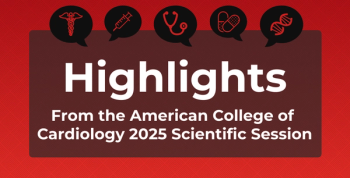
Patients With Anorexia Nervosa Demonstrate Altered Brain Circuitry
Psychiatric disorders can affect both the mind and the body. Anorexia nervosa is the most deadly of this type of disorder, despite its low incidence among both young men and women.
Psychiatric disorders can affect both the mind and the body. Common symptoms include extreme tiredness, strong feelings of fear, marked changes in eating habits, and confused thinking.1 Anorexia nervosa (AN) is the most deadly of this type of disorder,2 despite its low incidence among both young men (0.1%) and women (0.4%). Study results from 2007 show the lifetime incidence rates to be 0.3% and 0.9%, respectively.3
A team of investigators recently
Their patient population consisted of 48 women: 26 who were in remission and treatment for AN (RAN) and a matched control group of 22. The women in the study group had diagnosed AN according to Diagnostic and Statistical Manual of Mental Disorders, Fourth Edition; provided proof they weighed above 85% of average body weight, among other criteria; and had a lifetime incidence of obsessive-compulsive disorder of 15.4%.2
The study took place over 72 hours at the University of California, San Diego’s
To compare feelings of hunger against satiation, the study authors used a “hungry condition” of a 16-hour fast, with only water being provided as needed, and a “fed condition,” which consisted of standardized meals (30 kcal/kg of body weight per day) and breakfast (450-500 kcal) on the morning before their second scan.2
Overall, both groups gave similar ratings to their hunger and thirst feelings. However, the women in the RAN group exhibited 2 distinct findings2:
- Less responsive to a tastant (sucrose and water) in the hungry versus the fed condition
- Lower of a response to tastants compared with the control group
In essence, this means that individuals with diagnosed AN have circuits in the brain that remain dormant when they take in food. Fulfilling their feeling of hunger is not rewarding to them. “Hunger failed to activate this food reward circuit in people with AN, which raises the possibility that the trait underlies restrictive eating and severe weight loss in persons with a history of AN,” the authors said.3
There were 3 areas of the brain that differed in activation among the RAN group3:
- Ventral caudal putamen (VCP), in that their response to hunger was considered abnormal, despite having comparable feelings of satiation
- Anterior insula, in that they had less neural activation to taste stimulation
- Right anterior and mid-dorsal insula, in that they had less connectivity to the VCP
“These data open the door to potential new ways of treating this disorder,”
To further elucidate the relationship between brain activity and attitudes toward food of patients who have AN, the authors suggest additional studies of the brain’s neural activation toward “unpredictable” tastants, as well as how they value and approach food, specifically in the hungry state. They believe such research could lead to creation of a registry that would enable future treatment of patients with AN by compiling data on those who have recovered.
Reference
1. Salters-Pedneault K. Types and symptoms of common psychiatric disorders. Verywell Mind website.verywellmind.com/psychiatric-disorder-definition-425317. Published March 21, 2020. Accessed March 30, 2020.
2. Kaye WH, Wierenga CE, Bischoff-Grethe A, et al. Neural Insensitivity to the Effects of Hunger in Women Remitted From Anorexia Nervosa [published online March 12, 2020]. Am J Psychiatry. doi: 10.1176/appi.ajp.2019.19030261.
3. LaFee S. How brain biology promotes starvation in patients with anorexia nervosa. UC San Diego News Center website. ucsdnews.ucsd.edu/pressrelease/how-brain-biology-promotes-starvation-in-patients-with-anorexia-nervosa. Published March 12, 2020. Accessed March 30, 2020.
Newsletter
Stay ahead of policy, cost, and value—subscribe to AJMC for expert insights at the intersection of clinical care and health economics.












































